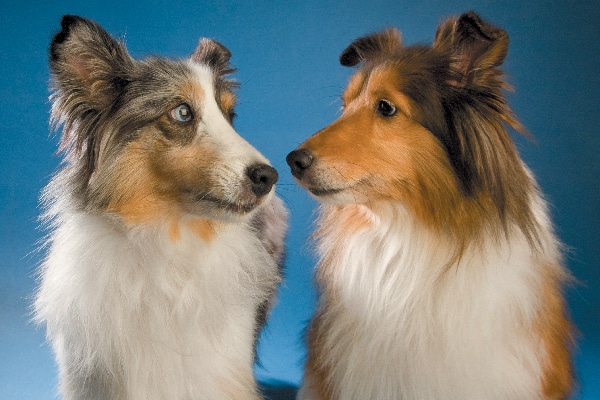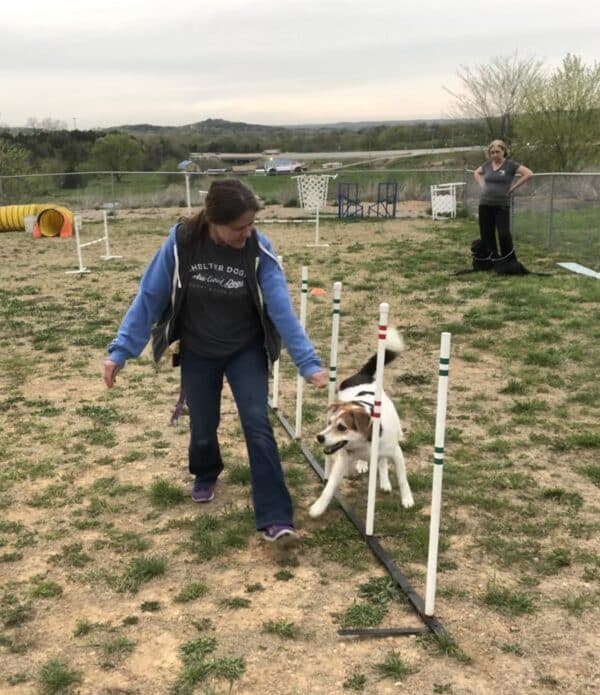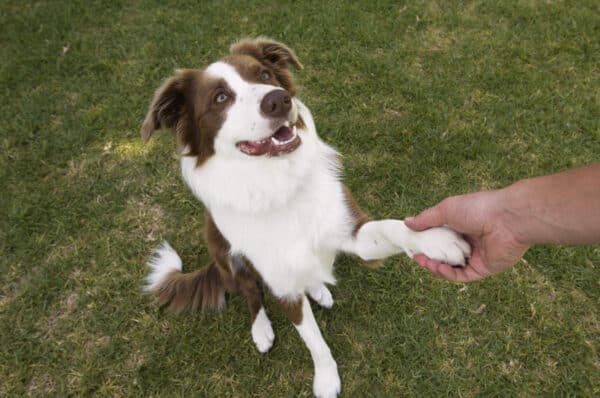Living with multiple dogs in the home can be one of the most rewarding and loving experiences in the world — or it can be challenging and outright dangerous. Success depends on you being dog savvy, which means being a benevolent leader and fluent in speaking dog.
If we don’t possess the knowledge and understanding of dogs when we have more than one dog in our home, they become stressed. And a stressed dog can cause angst for the entire group as well as us, their caregivers. I’ve had the honor and privilege of living with a group of dogs for the past 45 years and have trained thousands of caregivers who share my world. The biggest issues I’ve found take place during these times: feeding time, greetings, playing, toys and treats, sleeping and going outside. Let’s look at how to solve these issues.
The 6 Ways to Handle Multi-Dog Household
1. Feeding dogs in a multi-dog household
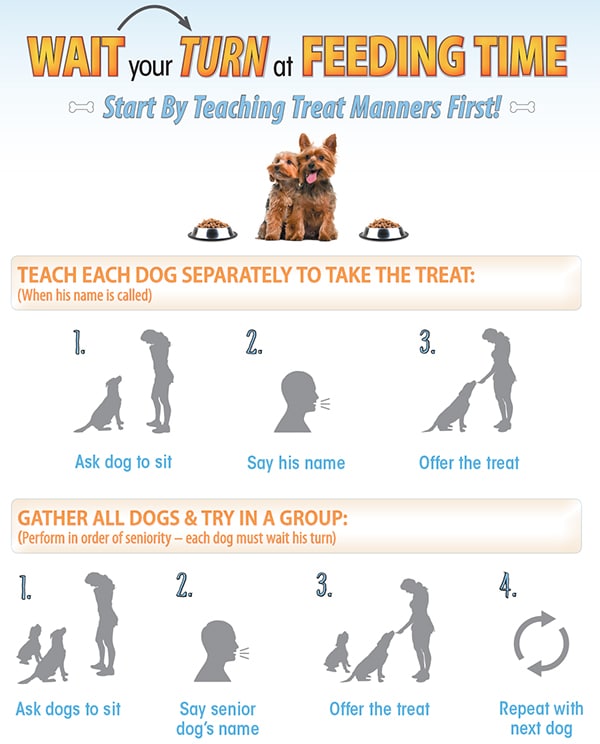
Since dogs can’t feed themselves, feeding time can cause great anxiety. Fights can happen if we aren’t careful and proactive with supervision and manners training.
Solution: I use seniority and full-time supervision when feeding a group of dogs. A dog with seniority, as in the one who has been with me the longest, has manners and knows my routine. This would be the teacher dog. Feeding this dog first and moving down the group in this manner will help the newest or youngest dogs learn their place.
Feed each dog in the same place, saying his or her name first and placing the bowl on the floor, and the rest will follow. A young, exuberant pup may push his way in, and this will be an opportune teaching moment, not only by you but also by the dogs who are fed before him. Don’t underestimate dogs learning from each other.
Teaching dogs to wait their turn at feeding time is best done by teaching treat manners first. Teach each dog separately to take the treat only when his or her name is called. Then add one dog at a time, offering the senior dog a treat first by saying his or her name.
Ask the dog to sit before taking a treat. You can have a group of two or 10 dogs, asking them all to sit at the same time, then call a dog’s name and offer that dog a treat. Each dog will wait patiently to hear their name called.
2. Determining places of rest/sleep in a multi-dog household
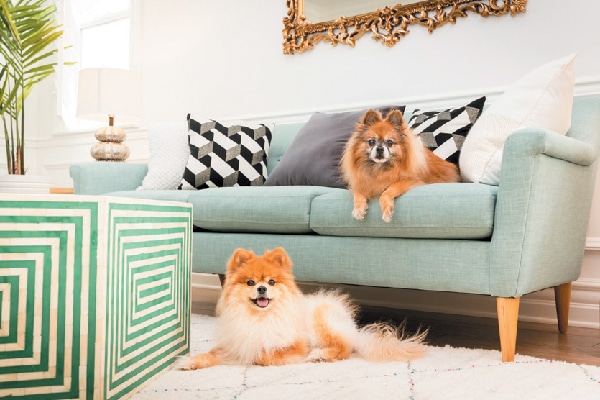
Most dogs like to sleep or rest undisturbed. Not having a space to get real rest and sleep makes for a cranky, anxious dog who may express himself in unwanted behaviors like aggression, hyperarousal behaviors, bullying, etc.
Solution: Provide safe places for them to sleep. I let my dogs choose where to sleep — a couch, my bed, under a table or wherever they want on the floor. I provide dog beds in each room in my home. They share and often will sleep/rest together, but they also know there is a place away from it all, if they so choose.
3. Managing greetings in a multi-dog household
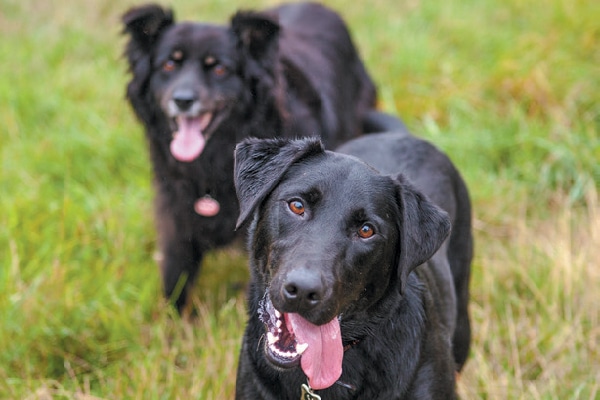
Homecoming is probably the most exciting part of a dog’s day. When you have a group of dogs waiting to be the first to greet you, it can wreak havoc in the best of them. Company greetings are also an exciting time for dogs, leading to anxiety with each ring of the doorbell.
Solution: Most of us have taught our dogs to go crazy upon homecoming by being as excited to see them as they are to see us. Managing our own calm during this time will go a long way to peaceful greetings. In the case of company, teaching manners will come in very handy for everyone involved, human and dog alike. Teach “wait” or “sit” or have your dog behind a puppy gate or an imaginary boundary that you have already taught. This keeps the excitement level down, allowing company to enter safely.
4. Going outside in a multi-dog household
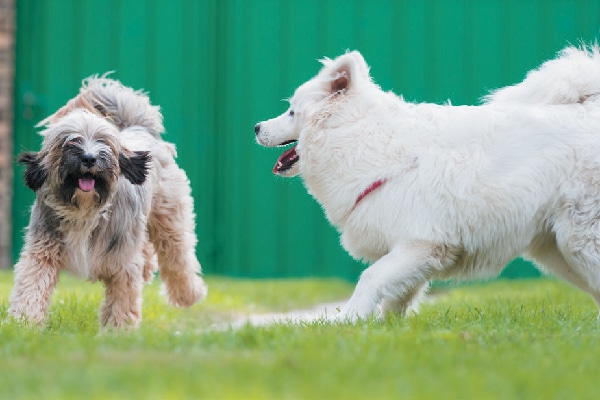
Going for walks or a hike or getting in the car gets most dogs excited. Rightfully so —this may be the highlight of their day. This excitement can cause anxiety and tension, leading to crowding, escaping, barking and fighting.
Solution: Remaining calm ourselves while putting on the dogs’ leashes and collars is the beginning of the calm for getting out of the door or the car. The slower I go and the calmer I am, the dogs will match my energy. If one of them gets excited, I work with that one alone until he knows that being calm will get them out the door. Then when getting the group of them ready, the calm is already in place. This makes for easy passes through the door, gate or the car.
5. Positive play in a multi-dog household
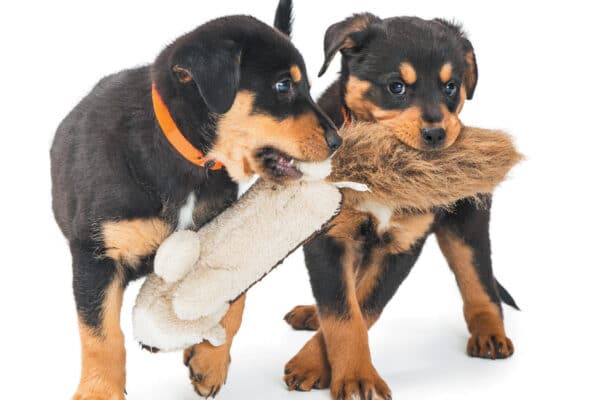
Play is a normal and essential part of being a dog, yet it can sometimes get out of control. Some dogs play more roughly than others, and some dogs have their own special toy they covet and don’t want to share.
Solution: It’s up to us to manage dog play, and that means that supervision when two or more dogs play is crucial. Knowing when intervention is necessary goes a long way toward stopping a fight before it happens.
Intervention can be:
- a timeout
- interrupting with a training session
- changing dogs with whom they are playing
6. Sharing toys & treats in a multi-dog household
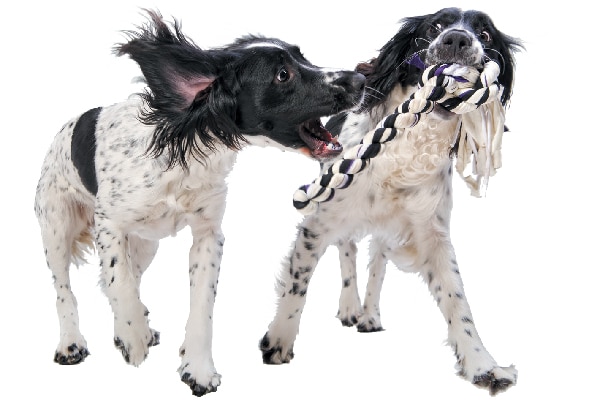
Dogs can covet their toy or want to be the first to get a treat. It’s called resource guarding and is a normal part of what it means to be a dog. If you just grab a potato off of my plate, I won’t be too happy about that and get mad at you. However, if we don’t understand the signs a dog is using to express his discomfort and be there to intervene, dogs must do something to alleviate their stress, and this could mean a bite.
Solution: Knowing our dogs and what’s important to each of them helps keep peace and harmony. One of my dogs only likes the toys of whatever dog I’m playing with at the time. She doesn’t care about it any other time. So, I’ve made a training game to keep them both happy, and this kind of game reminds them of our benevolent leadership while they both get a chance to play with said toy.
I ask one to sit and stay while throwing the ball for the other one and vice versa. They love this game. It teaches and reinforces obedience cues, plus teaches them not to resource guard. After playing this way for a few throws, I can just throw it for either of them to fetch. Using obedience cues teaches dogs patience and focus while maintaining appropriate manners.
The bottom line on a multi-dog household — always supervise
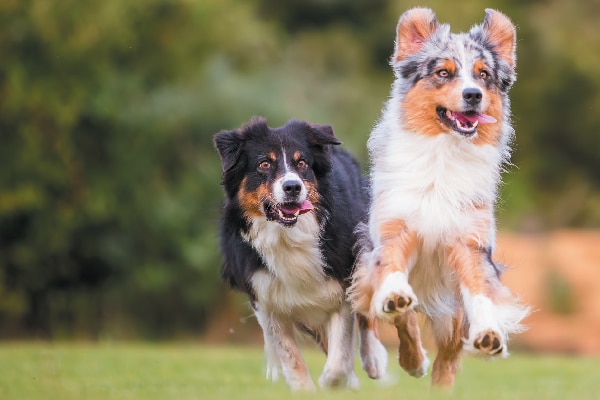
Management and proper supervision are key to a well-balanced and harmonious, multi-dog household. Dogs are naturally non-violent communicators. If we as their guardians aren’t fluent in speaking dog, they are left to fend for themselves.
This can lead to anxiety-created, unwanted behaviors expressed by aggression, destructive chewing, separation anxiety, barking and hyperarousal behaviors. Understanding dogs means being responsible to each dog’s needs. Once you do this, you’ll be on your way to a happy, healthy and thriving multi-dog home.
Decoding Doggie Body Language
Friendly
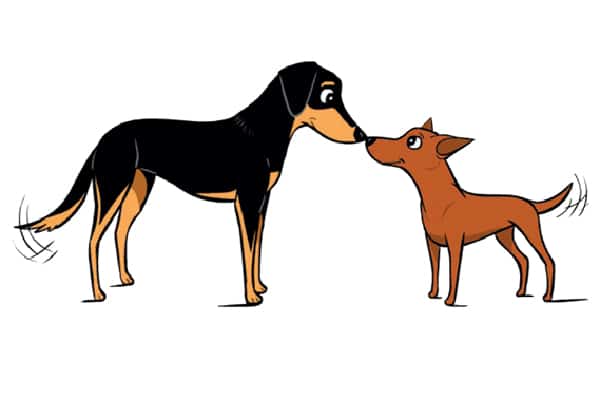
The following are signs of a friendly greeting asking to be friends:
- Soft, alert eyes
- No facial tension
- Ears are forward and floppy
- Body is relaxed
- Mouth closed for better sniffing
- Gently wagging down or horizontal tails
Stressed
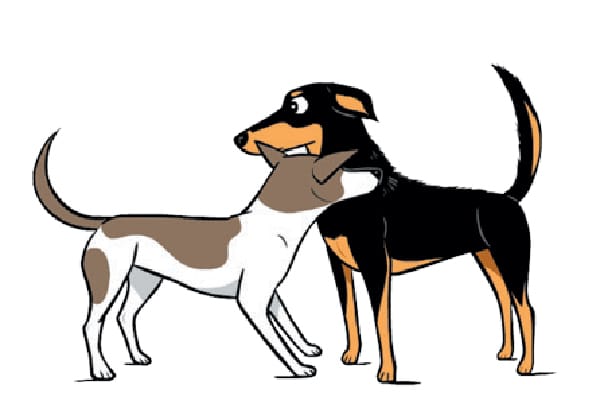
Recognizing the following signs can alleviate stress before it becomes a problem:
- Defensive stance
- Big eyes
- Tail straight up
- Dog is looking away
- The mouth is closed
Aggressive
- Direct stare
- Horizontal tense body
- Dilated pupils
- Hackles may be up
Knowing dog body language can keep dogs safe!
Sex, Age, and Copycats
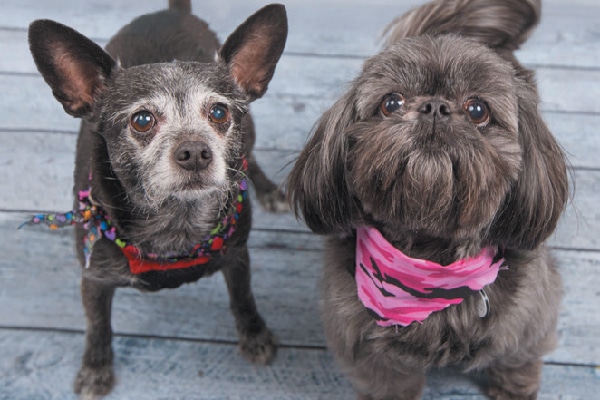
- Male/female: The sex of the dogs isn’t a problem if the dogs are well-adjusted. But, if you know a dog has an issue with a certain sex, avoid adding that sex to your group unless you know what you’re doing and want to take on that challenge. Sometimes two female littermates adopted at the same time bond more with each other than their human and if they have a conflict, the conflict can be more intense.
- Puppy vs senior: Puppies can be no fun for an aging dog or one in pain. Both must have their needs met emotionally and physically. Give the younger dog the mental and physical stimulation necessary so that he isn’t constantly bothering the older dog or the dog in pain.
- Copycat: Dogs feed off of each other’s energy. For example, if you have a dog who barks with excitement, this may teach the others to become barkers or get them excited in other ways. Tackle unwanted behaviors on a one-on-one basis by teaching the dog with the unwanted behavior an alternate behavior that you do want. Identifying the culprit and working with that dog will restore harmony in the whole group.
Read more about dog training and behavior on Dogster.com:
- Why Do Dogs Wag Their Tails?
- How Do Dogs Show Affection to Humans?
- Why Do Dogs Smell Each Other’s Butts?
Featured Image Credit: Holly Hildreth Photography.

